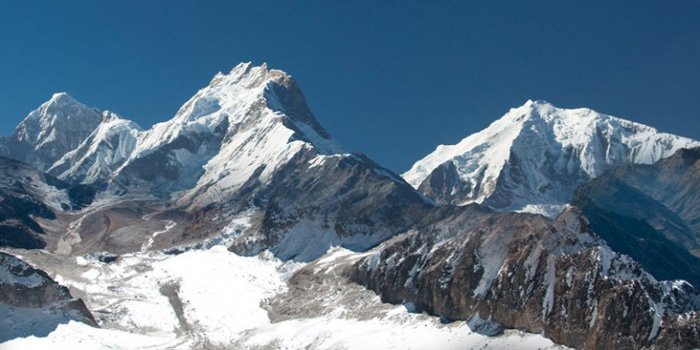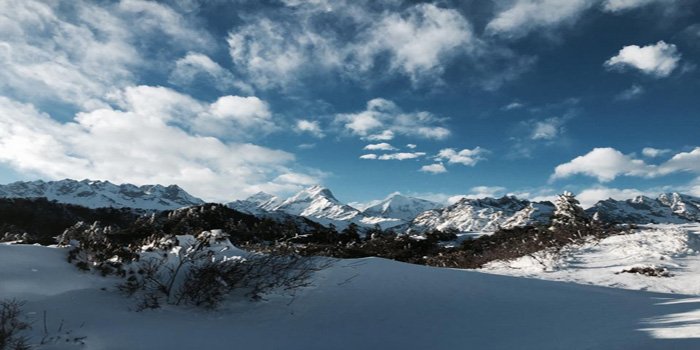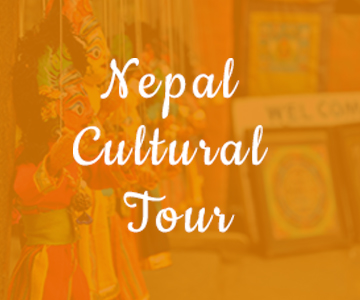Trip Introduction
Paldor Peak Climbing is one of the popular trekking peaks of Nepal. It is situated at the south-east of Ganesh Himal. Marking the link-up of the Tiru and Karpu Dandas at the skull of the Mailing Khola, a branch of the Trishuli Gandaki River. Paldor Peak Climbing elevation is just under 6,000m but still offers a very satisfying and a moderate climb. This peak was first climbed by Bill Tilman, Peter Lloyd, Tenzing Sherpa and Da Namgyal during the monsoon of 1949 by the North-East Ridge. Although it must be said that it is difficult to fit Tilman’s description of the actual route. We will approach the peak from Syabru near Dunche which is only a few hour drives from Kathmandu.
From here the trail crosses the Langtang Khola, passing through the Tamang villages and many rivers. Make an interesting look into local life and customs. We make it to Paldor valley and once we reach the Col. There are two options, we can either climb straight using ropes or continue around the crevasses back for an easy 45-degree ridge. Once we make it to the peak, it rewards us with the excellent views of Ganesh Himal. Also, the Langtang Lirung, Manaslu, Shishapangma and many more view can be seen.
What's included
-
Four nights Accommodation in a Three star Hotel in Kathmandu including breakfast. This will be two nights before Trek and Two nights after Trek
-
International and domestic airport arrivals and departures
-
All necessary trekking paper, trekking permit (TIMS), national park entry permit & Peak climbing termit.
-
Private jeep Kathmandu to Syabrubesi and syabrubesi to Kathmandu.
-
Peak climbing Guide and Trekking guide equipment and salary
-
One Assistance Guide who support to pitch tents and guarding camp at night / as per group size.
-
One Cook and One kitchen supporter/s as per group size.
-
Required kitchen utensils
-
Cooking fuel and lighting service
-
Required portage service to carry tents, food stuffs, fuels & kitchen utensils Necessary tent and equipment
-
All the staff insurance, well paid salary, equipment, transportation.
-
All the transporting.
-
Government taxes and service charge.
-
Medical supplies (first aid kit)
What's excluded
-
Nepal visa.
-
International airfare.
-
Travel and rescue Insurance
-
Hire of climbing equipment if not bringing own.
-
Food in Kathmandu.
-
Extra night hotel accommodation in Kathmandu if arrive early or late departure.
-
All the hotel accommodation or meals in Kathmandu.( in the case return early from trek due to any reason)
-
Personal expenses( bar bills, coke, beer, bottle of water, phone call, laundry service etc.
-
Tips for guide porter.
-
Day 1
Arrival in Kathmandu
Arrive into Kathmandu. You will be met by a member of Top of the World Treks and after a 45 minute bus journey to the heart of the city and check into the hotel there is time for a cup of tea, shower and then a chance to see the tourist district of Kathmandu by night as we go for dinner before an early night.
-
Day 2
Sightseeing in Kathmandu
A day in Kathmandu where we will take you to Swayambhunath which is a Buddhist stupa and Monastery, which is over 2000 years old and one of the oldest in the world. Here is a great chance to see across the valleys, see some monkeys and begin to learn about this fascinating country. The afternoon will be spent getting for the trek and some time to relax and make sure all the kit and packing is complete. Also the first time you can go shopping which in Thamel is an adventure in itself!
-
Day 3
Drive from Kathmandu to Syabrubesi
Drive from Kathmandu to Syabru Besi which takes about nine hours. You head north out of Kathmandu driving through scenic foothills and ridgeline vistas to Syabru Besi passing through Dhunche. While passing along the road at the bank of the Trishuli river you catch a glimpse of Ganesh Himal, terraces and green hills. As you pass through Dhunche you feel as if you are heading towards deep land. At the same time, you notice that the road is still under construction.
-
Day 4
Syabrubesi to Gatlang
Trek from Syabrubesi to Gatlang (2238m.) via Goljung and it takes about six hours. While trekking you experience some of the Tamang culture. You can see scenery from a perfect view point. This day you walk through villages. The cultural show at Goljung and Gatlang makes your trekking a memorable one. Gatlang, set high on a hillside among terraced fields and is a Tamang settlement. One can visit a Tamang monastery and beautiful Parvatikunda Lake at Gatlang.
-
Day 5
Gatlang to Yuri Kharka
Trek from Gatlang to Yuri Kharka (3390m.) which takes about five hours. You trek an ascending path all the way to Yuri Kharka passing through forests of fir, juniper, rhododendron and local vegetation. During the monsoon, local people bring their domestic animals for grazing in Yuri Kharka.
-
Day 6
Yuri Kharka to Somdang
Trek from Yuri Kharka to Somdang (3,270m.) via Khurpudanda pass (3,620m) and it takes about five hours. Until Khurpudanda pass the trail moves uphill when you then begin to follow a descending path to reach Somdang. From the view point of Khurpudanda pass you can enjoy the spectacular views of Paldor, Langtang, Ganesh Himal, Pangsang La and many more. En route you also pass through forests. At Somdang, you can observe zinc mines.
-
Day 7
Somdang to Jasta Khani
Trek from Somdang to Jasta Khani (3700m.) which takes about five hours. This day you trek gradual ascent path passing forests until you reach Paigutang Kharka. Now the trail goes steep up to Jasta Khani. On the way you cross rocky path covered by juniper. There is a zinc mine at Jasta Khani.
-
Day 8
Acclimatisation Day at Base Camp
Rest day at Base camp for acclimatization. This is an acclimatization day for the preparation of Paldor summit.
-
Day 9
Acclimatisation Day at Base Camp
Rest day at Base camp for acclimatization. This is an acclimatization day for the preparation of Paldor summit.
-
Day 10
Base Camp to High Camp
Climb from Paldor base camp to High camp which takes about five hours. The path moves through rocky glacier. The views of Paldor East and Paldor West completely mesmerize you. Moreover, you can also enjoy the views of rocky hills and green hills all around you.
-
Day 11
Acclimatisation Day at High Camp
Rest day at High camp for acclimatization. This is another acclimatization day for Paldor summit
-
Day 12
Summit Day and down to Base camp
Summit Paldor Peak (5,896m) and come back to Base Camp and it takes about nine hours. At the summit of Paldor you will be speechless by the panoramic views of Ganesh Himal, Sisapangma, Langtang Lirung, Ganesh I, II, III, Manaslu and views of Tibetan mountains.then over night at Base Camp.
-
Day 13
Base Ccamp to Somdang
Trek from Base camp to Somdang which takes about seven hours. Now you walk straight downhill all the way to Paigutang Kharka and then the trail moves along gradually descending path to Somdang.
-
Day 14
Somdang to Narchet Kharka
Trek from Somdang to Narchet Kharka (3800m.) and it takes about seven hours. To reach Narchet Kharka you trek a gradually ascending path passing through forests and green hills. The views you can enjoy are of Ganesh Himal, Manaslu, Langtang Lirung and many other unnamed mountains and peaks.
-
Day 15
Narchet Kharka to Sertung
Trek from Narchet Kharka to Sertung that takes about seven hours. The trail you follow today is quite descent at first and then it climbs up for some distance. En route, you cross forests covered with bamboo, pine, rhododendron and waterfalls. Tipling is the first village you encounter on this route. It is a big Tamang village which is rich in mixed culture and has chorten and church. The houses are made of wood, tin and stone. People living here have their distinct life styles and they are involved in making goods from bamboo sticks. You can see farming terraces where farmers grow potatoes, wheat, barley, buck wheat, maize and green vegetables. Now you have to climb down steeply until you cross a suspension bridge over Gorkhen Khola (stream). After you cross, the trails go uphill to Sertung. It is also a Gurung village. People of this area welcome trekkers with their local culture.
-
Day 16
Sertung to Jharlang
Trek from Sertung to Jharlang which takes approximately eight hours.The early part of your trail is gently up until you arrive at small ridge. From here, you can enjoy spectacular views of Ganesh Himal , farming terraces, a waterfall and several villages at a distance. Now you climb down the ridge and cross farming terraces and local villages. After you take lunch at Borang, your trail turns downhill and uphill respectively to Jharlang. It can be best described as a Tamang village with its mixed culture.
-
Day 17
Jarlang to Darkha
Trek from Jharlang to Darkha and it takes about seven hours. Crossing landslide nearby Jharlang, you begin your trek on an ascending path with views of Ganesh Himal, Manaslu, jungle, waterfall, farming terraces and villages. Darkha is the first Brahmin village on this trek. From here you can enjoy the view of Aankhu stream at some distance.
-
Day 18
Darka to Khahare Bazzar
Trek from Darkhu to Khahare Bazaar that takes about seven hours. The early part of your trek is descending to Darkha phedi and your route moves along the river bank until you reach Khahare. There is a big market at Khahare Bazaar with lodges, tea shops, big school and other important buildings. This place is famous for magnificent views of farming terraces.
-
Day 19
Khahare Bazzar to Kathmandu by Bus
Drive from Khahare Bazaar to Kathmandu by bus which takes approximately eight hours. The road until Dhadingbesi moves through unpaved road and then you drive along the well paved road until you reach Kathmandu. It can be best defined as a scenic journey due to the beautiful views of rivers, hills, terraces, forests and villages.
-
Day 20
Sightseeing in Kathmandu
Today after a leisurely start we will continue the tour of Kathmandu by visiting the largest Buddhist stupa in the world. Boudhanath stupa is a world heritage site and a place which is an amazing place to see Buddhism and understand more about not only the religion but the Nepali culture. A group dinner will be had in the evening to celebrate the end of the trek.
-
Day 21
Depart to Home
Extra days are available at your own cost but we will be happy to arrange this for you.
IMPORTANT NOTE
Please be aware that your safety while in Nepal is our number one propriety. All itineraries are subject to change if there are safety concerns, health concerns of people in the group and/or weather concerns. This will be decided by the trek leader but we will always discuss the options with the group where possible to ensure peoples wishes are taken into account, however, the Treks leader decision is final.
Book our fixed departures
Equipments
Equipment Check – List
What clothing and equipment to take is one of the things that people worry the most about! We can advise you and help you and it does, of course, depend on the time of year, the area, the altitude and how many days you are trekking/climbing. When you arrive in Kathmandu we will go through all your equipment to ensure that it is correct for your trip. In Thamel (the tourist area of Kathmandu where you will be staying) there is an abundance of shops selling equipment and clothing so if anything is forgotten it can easily be sourced. It is also possible to hire climbing equipment and also items such as down jackets, and sleeping bags saving you a large purchase.
The following equipment list is suggested and necessary for both camping and tea house treks. Use this list as a guideline. The basic checklist should help you with your packing for any of our trips. Please remember that you should always try to keep the weight of your clothing equipment down to a minimum. Your packed trek bag should weigh no more than 15kg. Please remember this is just a checklist and you do not necessarily need to bring everything that is listed below.
GENERAL CHECKLIST
The following basic checklist should help you with your packing for any of our trips. Please remember that you should always try to keep the weight of your clothing equipment down to a minimum. Your packed trek bag should weigh no more than 15 kilograms. Please remember this is just a checklist and you do not necessarily need to bring everything that is listed below. Use your own experience and judgment to make your decision.
-Light and expedition weight thermal tops.
-Fleece jacket or pullover.
-fleece wind –stopper Jacket (optional)
-Waterproof shell jacket (preferably breathable fabric)
-Lightweight thermal gloves.
-Underwear (4)
-Shorts (2)
-Lightweight cotton long trousers/pants.
-Light and expedition weight thermal bottoms.
-Sun hat or Scarf.
-Warm fleece hat or light balaclava.
-T-shirt (2)
-Thin, lightweight (inner socks) (4).
-Sunglasses with UV protection.
-Sleeping bag rated to 0 degrees ¾ season
-Headlamp (eg Petzl) Spare bulbs and batteries.
-Small padlock to lock trek bag.
-Basic first aid kit(see First aid medicine bellow)
-Plastic bags –for keeping items dry inside trek bag.
-Daypack ( 35 to 40 litters/ 2500 to 3000 cubic inches.)
-Camping mattress, eg Thermarest pad.
-water bottles.
-Toiletries.
-Small wash towel.
-Footwear, appropriate to the trip.
-Waterproof shell trousers/pants. (Preferably breathable fabric)
TREKKING CHECKLIST
In addition to the items listed in our general checklist you will need to take the following on your trekking trip:
-Heavyweight gloves or mittens with a waterproof shell outer.
-Down vest and/ or jacket (optional).
-Fleece or wool trousers/ pants.
-Trekking/ hiking boots with spare laces.
-Thick, warm wool hiking socks (4)
– Footwear for around camp, eg running shoes and /or sandals.
-Gaiters (optional).
-Telescopic trekking/ ski poles (optional)
MOUNTAINEERING / CLIMBING CHECKLIST
In addition to the checklists for general trekking equipment above, and depending on the trip you have chosen, various items of mountaineering equipment may also be required, eg:
-Plastic boots and crampons (preferably step – in bindings ) with front points.
-Mountaineering Safety harness.
-Mountaineering Ice axe(60 to 75 cms long – depending on your height and personal preference).
-120 cms (4ft) climbing sling and to locking and unlocking caravans.
-Telescopic ski – sticks (optional).
-Prussik loops.
-Climbing helmet (optional).
-Jumper (Ascender & Descender).
-Pocket Knife.
-Headlamp.
-Mattress.
-Rope and Snow bars.
-Ice crew.
-High altimeter.
Most if not all of this equipment will be needed for any trip that crosses steep, snow-covered ground, or which includes sections of glacier travel. Our recommendation that you take no more than fifteen kilos of trekking equipment dose not include your plastic boots, ice axe, Crampons otherness/carabiners. During the trek, climbing hard wear will be carried separately from your trek bag, in group bags until needed.
EQUIPMENT RENTAL
To minimize your expense outlay for trekking and climbing equipment you may never use again, equipment rental and buying is possible in Kathmandu. You find them a lot cheaper than you find in Europe and the USA. Shops in Thamel offer a wide range of equipment available for rent and buy. Here is some cost which gives you an idea of the cost to rent in Kathmandu.
-Sleeping bags.
-Down Jackets.
-All-purpose mountaineering Ice axe (60 – 70 cms)
-Ice hummer.
-Climbing Harness.
-2 looking Carabiners, Climbing Sling.
-12 – point Crampons.
-Plastic Climbing boots.
-Helmet.
FIRST AID MEDICINE
-Bandage for Sprains.
-Plaster/ Band-aids.
-Iodine or Water filter(optional)
-Moleskin/ Second skin – for blisters.
-Antiseptic ointment for cuts.
-Anti-bacterial throat lozenges (with antiseptic)
-Aspirin/ paracetamol- general painkiller.
-Oral rehydration salts.
-Broad-spectrum antibiotic (norfloxacin or ciprofloxacin).
-Anti – diarrhoea medication (antibiotic).
-Diarrhoea stopper (Imodium – optional).
-Antibiotic for Giardia or similar microbe or bacteria.
-Diamox (Altitude sickness – can be bought in Kathmandu.
-Sterile Syringe set (anti-AIDS precaution).
– For more details please see our staying healthy topic.



